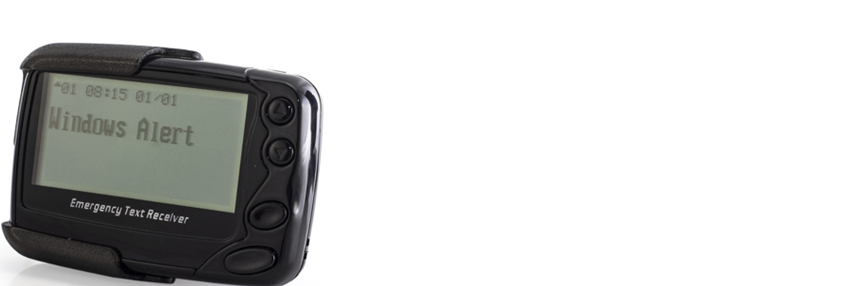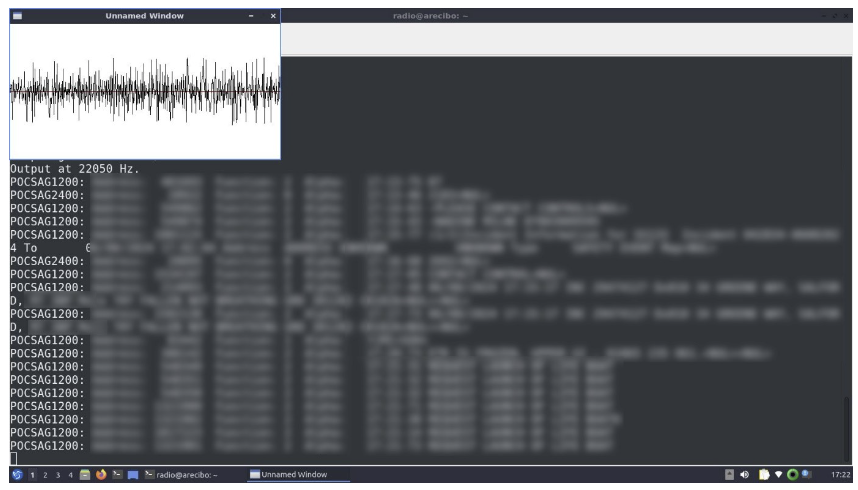I've been passionate about tinkering with Software Defined Radio (SDR) for over a decade. During this time, I've noticed a common trend among enthusiasts, whether they're sharing on forums or posting videos on social media: intercepting POCSAG/FLEX signals is often one of the first things they do. Although intercepting these signals can be illegal depending on where you are, it quickly becomes apparent that POCSAG/FLEX is not secure.
This raises an important question: why do emergency services still rely on the outdated POCSAG/FLEX protocols if it's insecure and easily intercepted?

Despite these valid concerns, POCSAG/FLEX remains a crucial communication tool for emergency services worldwide. Let's explore why this is the case and look at practical measures to protect the data transmitted through this protocol.
Understanding the POCSAG/FLEX Protocols
POCSAG (Post Office Code Standardisation Advisory Group) was developed in the 1980s for pager communications and is one of the earliest most widely used paging protocols. Its simplicity, cost-effectiveness, and reliability have made it a staple in critical messaging systems, even as technology has advanced.
POCSAG transfers data using packets, with each packet consisting of an address, message data and error-checking information. This data can easily be intercepted and decoded using freely available tools which have been around for years.
Most major emergency services use the Airwave network here in the UK for communication. However, there are a lot of organisations that still utilise them and the protocol remains very active.
FLEX was developed by Motorola to improve upon the likes of POCSAG offering enhanced features such as higher data rates and a more efficient use of the radio spectrum
Sample POCSAG Signal
For SDR users, a POCSAG signal will look like this within their software's waterfall and is normally found on the following frequencies using FSK (Frequency Shift Keying) modulation at either 512, 1200 or 2400bps.
26MHz
49MHz
138MHz
153 to 153.5MHz
454MHz

You can have a listen here - sigidwiki.com/images/4/4f/POCSAG_Sound.mp3.
What Kind of Data Does POCSAG/FLEX Transmit?
When it comes to the types of data transmitted over POCSAG/FLEX, think of critical, concise messages that need to be delivered without fail. For instance, in a hospital setting, a doctor might receive an alert about a patient's sudden change in vital signs, prompting an immediate response.
Firefighters could get dispatch messages with the address and details of an emergency, allowing them to navigate quickly to the scene.
Similarly, paramedics might receive updates about a patient's condition en route to the hospital, ensuring they are prepared upon arrival. You can also see this type of technology used in a more industrial setting for the sending and receiving of SCADA alerts.
These snippets of crucial information are brief but essential and can be full of personal information such as age, address, health issues, d.o.b.

Why POCSAG/FLEX is Still in Use
In today's world of advanced communication technologies, it's surprising that the POCSAG/FLEX paging protocol is still in use. However, there are several good reasons why it remains valuable, especially for emergency services.
1. Reliability and Coverage
POCSAG/FLEX operates on low-frequency bands, which means it can cover large areas and penetrate buildings and obstacles effectively. This is crucial for emergency services that need to receive messages reliably, even in remote or rural areas where cellular signals might be weak or non-existent.
2. Cost-Effectiveness
Maintaining a POCSAG/FLEX network is cheaper than running a modern cellular network. For many emergency services that operate on tight budgets, this cost-saving is a significant advantage.
3. Simplicity and Efficiency
POCSAG/FLEX is designed to transmit small amounts of data, like text messages and alerts, very efficiently. This simplicity also means low power consumption, which is important for devices that need to run for long periods on a single battery charge.
4. Redundancy and Backup
For critical services, having a reliable backup communication method is essential. POCSAG/FLEX systems provide a dependable fallback option when more complex systems fail, ensuring that important messages are still delivered.
5. Specialised Applications
Certain industries, such as healthcare and emergency services, rely on the robustness and reliability of pagers. POCSAG/FLEX’s long-standing presence in these sectors means there are still many pagers and supporting infrastructure in use.
Countries Still Using POCSAG/FLEX for Emergency Services
United States: Fire departments, EMS, and some police departments.
United Kingdom: NHS hospitals, fire and rescue services, and some police forces.
Germany: Fire brigades, EMS, and the Federal Agency for Technical Relief (THW).
Australia: Ambulance services and fire services, especially in rural and remote areas.
Canada: Paramedic services, fire departments, and search and rescue teams.
Japan: Fire and disaster management agencies, hospitals, and medical services.
Netherlands: EMS and fire departments.
New Zealand: Ambulance services, and Fire and Emergency New Zealand.
Switzerland: Fire brigades, EMS, and civil protection agencies.
Addressing Security Concerns in POCSAG
One of the main criticisms of the POCSAG/FLEX protocols is its lack of encryption, which makes it susceptible to interception. However, there are ways to mitigate these security risks:
1. Implementing End-to-End Encryption
While POCSAG/FLEX itself doesn't support encryption, messages can be encrypted before they are sent using application-level encryption. This ensures that even if the data is intercepted, it cannot be read without the proper decryption key.
2. Using Secure Gateways
Routing POCSAG/FLEX messages through secure gateways that encrypt and decrypt the messages adds an extra layer of security. These gateways can be integrated into existing infrastructure with relatively low cost and effort.
3. Regularly Updating and Patching Systems
Keeping all systems that interact with the POCSAG/FLEX protocols updated and patched helps mitigate vulnerabilities. This includes the software and hardware used for transmitting and receiving messages.
4. Training and Awareness
Educating staff about potential security risks and best practices for using POCSAG/FLEX devices can significantly reduce the likelihood of sensitive information being compromised.
5. Monitoring and Incident Response
Implementing robust monitoring systems to detect unauthorised access or unusual activity can help organisations respond quickly to potential security breaches.
Overview
Despite its security shortcomings, POCSAG/FLEX’s continued use in 2024 highlights its reliability, cost-effectiveness, and suitability for specific critical communication needs. By implementing realistic security measures, organisations can continue to benefit from POCSAG/FLEX while mitigating its risks. Balancing the need for advanced security with the practical benefits of established systems like POCSAG/FLEX is crucial for emergency services worldwide.





